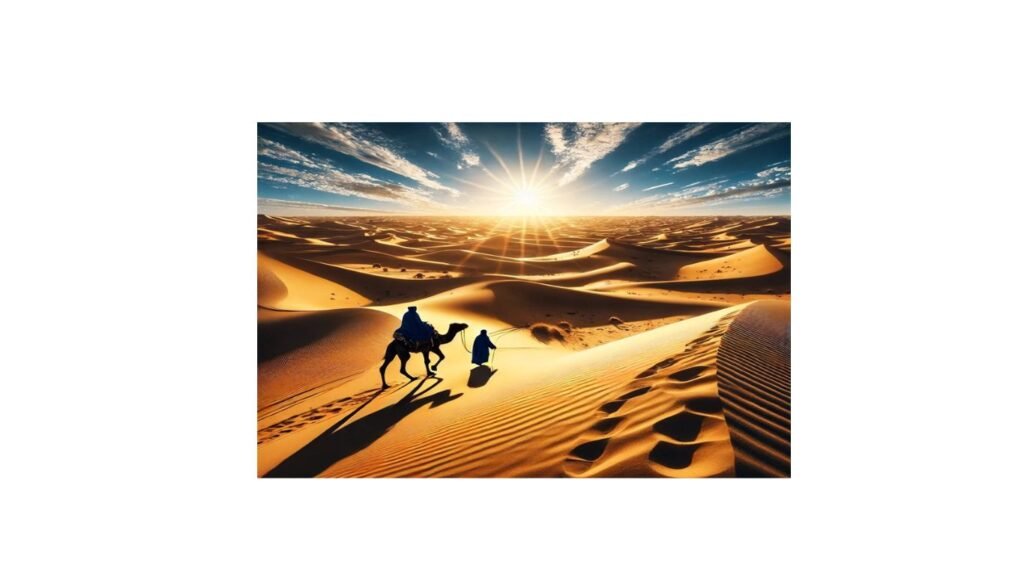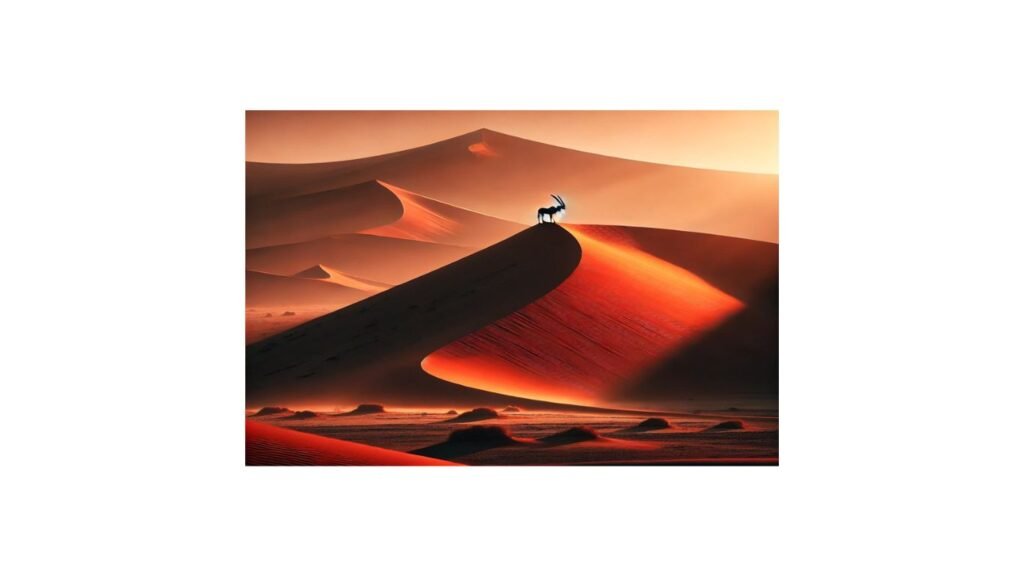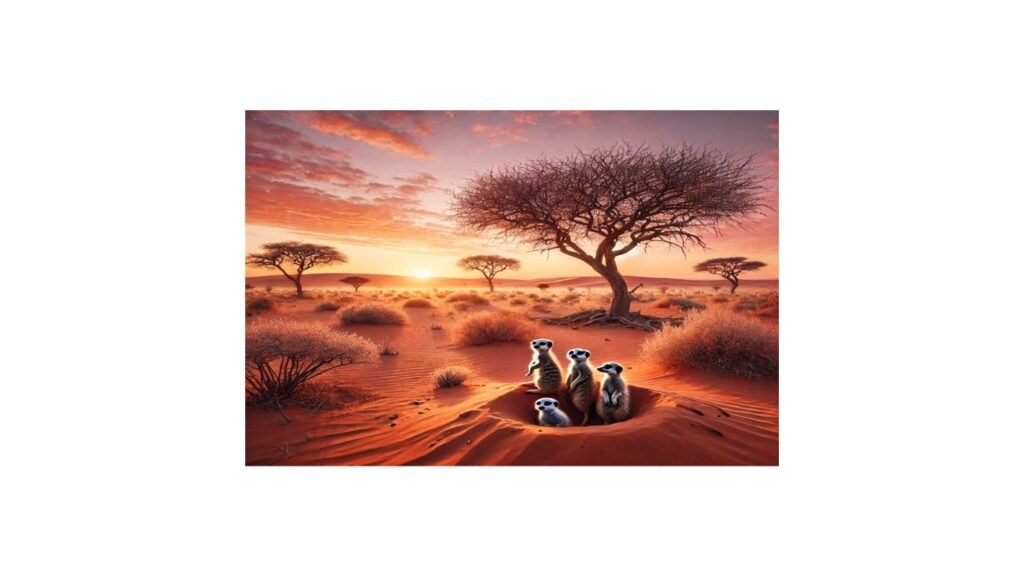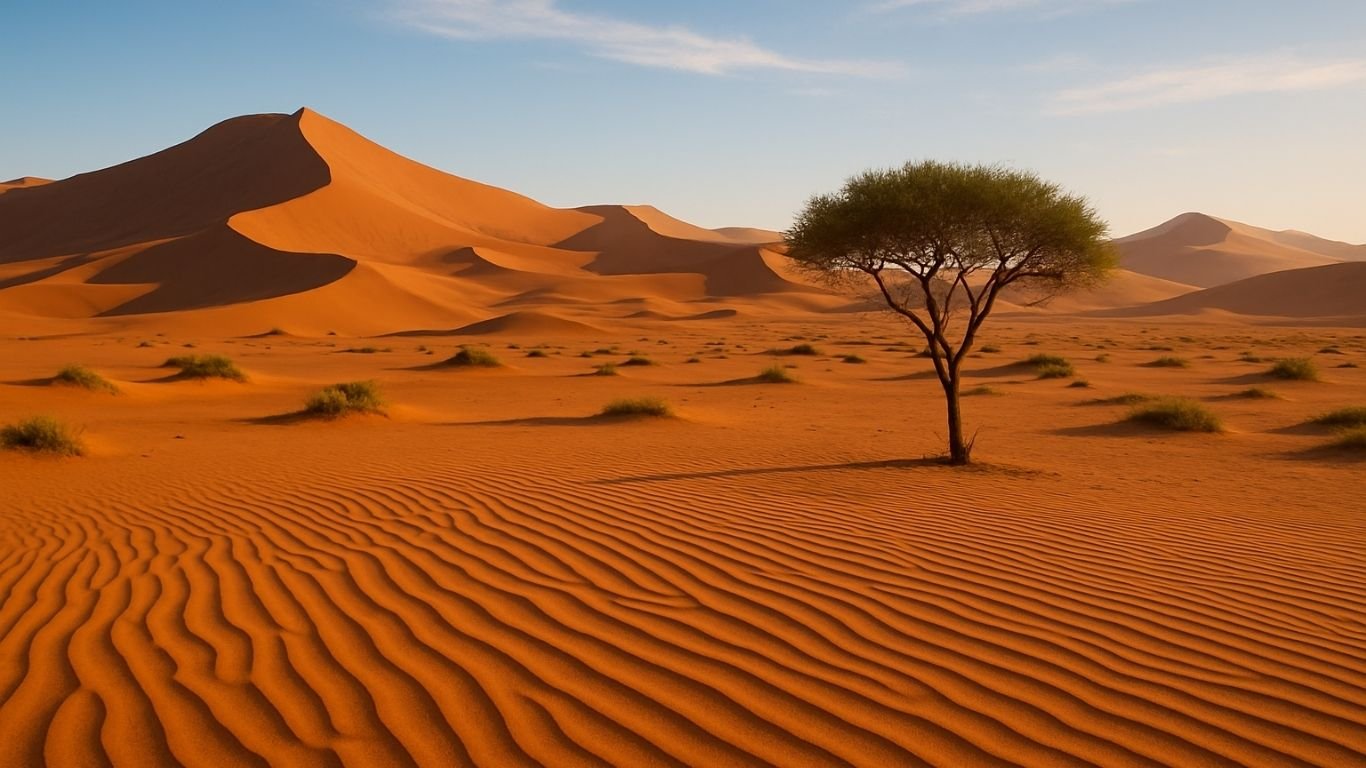Africa’s deserts are not just barren expanses of sand—they are dynamic realms of survival, silence, and secrets. Each one holds stories older than time, shaped by the earth’s fiercest elements and adorned with nature’s most resilient lifeforms. To the untrained eye, deserts might seem lifeless, but beneath their sun-scorched crust lies a pulsating ecosystem, ancient cultures, and wonders that defy expectation.
“Exploring Africa’s deserts” means stepping into landscapes where time feels suspended and every horizon whispers of the unknown. From the colossal dunes of the Sahara to the rust-red vastness of the Kalahari, each desert offers a unique lens into both the past and the possibilities of tomorrow. This journey is not just geographical—it’s existential, challenging the limits of human endurance, scientific curiosity, and our place in the natural order.
Table of Contents
Unveiling Africa’s Diverse Deserts
Africa is home to some of the oldest and most varied deserts on Earth. While the image of endless dunes dominates popular imagination, Africa’s deserts range from rocky plateaus and gravel plains to salt pans and ephemeral rivers. Each has distinct characteristics, histories, and cultural legacies.
The Vast Sahara: A Sea of Sand
Stretching over 9.2 million square kilometers, the Sahara is the world’s largest hot desert. Covering much of North Africa—from the Red Sea to the Atlantic Ocean—it touches countries like Egypt, Algeria, Mali, Chad, and Libya.
This immense desert is not just sand. Only about 25% of the Sahara consists of dunes (ergs); the rest includes rocky plateaus (hamadas), gravel plains, dry valleys, and salt flats. Temperatures soar above 50°C in summer, and yet, for millennia, nomadic tribes like the Tuareg have thrived here, navigating by stars and ancient routes.
Historically, the Sahara was once fertile savanna, home to elephants, giraffes, and rivers. Prehistoric cave art found in Algeria’s Tassili n’Ajjer depicts this forgotten age, proving how drastically climates can evolve.
The Namib: Ancient and Arid
Regarded as the oldest desert on Earth—dating back 55 million years—the Namib Desert stretches along Namibia’s Atlantic coast, weaving through Angola and South Africa.
Its name, derived from the Nama language, means “vast place.” The Namib is famous for its towering Sossusvlei dunes, some over 300 meters high, glowing deep orange at dawn. This desert hosts a unique convergence of sea and sand: fog generated by the icy Benguela Current sustains life where rainfall is nearly nonexistent.
Despite its dryness, the Namib nurtures lifeforms found nowhere else—Welwitschia mirabilis, a plant that lives up to 2,000 years, or the fog-basking beetles that harvest moisture from the morning mist.
The Kalahari: A Semi-Arid Wonder
Often mistaken as a true desert, the Kalahari is technically a semi-arid basin. Spanning Botswana, Namibia, and South Africa, it covers approximately 900,000 square kilometers.
Unlike the Namib or Sahara, the Kalahari supports a richer biodiversity. Seasonal rains allow grasses, acacia trees, and wildlife to flourish. Meerkats, gemsbok, lions, and over 200 bird species call it home. The desert is also a cultural heartland—the San people (Bushmen) have lived here for over 20,000 years, mastering survival through profound environmental knowledge and storytelling.

Adapting to Extreme Environments
Africa’s deserts are among the harshest habitats on Earth. And yet, life here doesn’t just endure—it innovates. Evolution has produced some of the most remarkable survival strategies in nature.
Flora’s Resilience in the Desert
Desert flora exemplifies evolutionary genius. Take Welwitschia, which survives in the Namib by drawing moisture from fog through its leaves. Or the Camelthorn tree, thriving in the Kalahari with taproots plunging over 60 meters deep in search of water.
Plants often exhibit xerophytic adaptations: waxy coatings, reduced leaf surfaces, and water-storing tissues. These traits allow survival during prolonged droughts and extreme temperatures.
In the Sahara, vegetation is rare but vital. Date palms, cultivated around oases, support entire ecosystems—offering shade, food, and moisture retention.
Fauna’s Survival Strategies
Animals in African deserts display astounding behavioral and physiological adaptations. Fennec foxes have large ears that dissipate heat. Addax antelopes can survive without free water, deriving moisture from plants. Insects like the Namib beetle tilt their bodies to catch fog droplets and funnel water to their mouths.
Nocturnality is another common trait—many animals emerge only after dusk to escape the scorching sun. Burrowing species, like desert hares or snakes, create underground shelters that buffer temperature extremes.
Human Adaptations and Indigenous Knowledge
Long before GPS or solar panels, indigenous desert communities adapted ingeniously. The Tuareg, for instance, use indigo-dyed clothing that reflects heat and protects against the sun. The San have intricate tracking systems and vast medicinal plant knowledge.
Their survival strategies are built on sustainability—rotational grazing, water conservation, and an intimate understanding of desert rhythms. This ancient wisdom remains relevant today, offering insights into climate resilience and ethical resource use.
The Unique Landscapes and Phenomena
To explore Africa’s deserts is to step into otherworldly scenery. Each moment offers visual poetry—from dancing mirages to star-laden skies.
Shifting Dunes and Rock Formations
The Sossusvlei dunes of Namibia are among the most photographed natural wonders. Their graceful arcs and vivid colors shift with light and time. In Algeria’s Tassili, rock formations resemble cathedrals, sculpted by millennia of wind erosion.
Sahara’s ergs evolve constantly—wind reshapes them, erasing footprints within hours. Meanwhile, the White Desert (Egypt) stuns visitors with chalk rock formations resembling mushrooms and icebergs.
The Mirage and Other Optical Illusions
In deserts, physics and perception collide. Inferior mirages, where the sky appears mirrored on the ground, are common illusions caused by layers of hot air.
These phenomena have inspired myths and survival legends. Travelers often chased “phantom lakes,” while traders told tales of shifting cities lost to the heat waves. In fact, mirages have misled entire caravans.
Night Skies and Stargazing
Deserts offer some of the clearest skies on Earth. With minimal light pollution and dry air, they become sanctuaries for stargazers.
In the Namib or Kalahari, the Milky Way arcs so brightly it casts shadows. Constellations appear in their ancient clarity, and planets glint like beacons. Many tour operators now include astro-tourism packages, blending traditional storytelling with celestial observation.

Challenges and Conservation Efforts
Beneath their harsh beauty, Africa’s deserts face unprecedented threats—both ecological and human-driven. Preserving these unique ecosystems demands urgency and innovation.
Climate Change Impacts
Rising temperatures and changing rainfall patterns amplify desertification. The Sahel, a transition zone south of the Sahara, is shrinking rapidly, displacing communities and threatening agriculture.
The Sahara is estimated to have grown by 10% over the past century due to climate shifts and unsustainable land use. Warming also disrupts fragile desert microclimates, affecting flora, fauna, and water tables.
Resource Management and Sustainability
Mining, overgrazing, and groundwater extraction endanger desert ecosystems. In parts of Namibia, uranium mining threatens the water supply in arid zones.
Efforts like controlled grazing, eco-sensitive tourism, and community-managed conservation areas have emerged as models of sustainable desert use. Local partnerships remain key to success.
Protecting Desert Biodiversity
Despite their resilience, desert species are vulnerable to even slight disruptions. Conservation initiatives such as Namibia’s Desert Lion Project or South Africa’s Kgalagadi Transfrontier Park safeguard species through research, habitat corridors, and local engagement.
Education, both local and global, is vital. Understanding desert ecosystems’ roles in climate regulation, biodiversity, and heritage can inspire broader conservation action.

Experiencing the Desert: Travel and Exploration
Traveling to Africa’s deserts is more than a vacation—it’s a transformative experience. But it demands preparation, respect, and curiosity.
Safaris and Guided Tours
Guided safaris offer safe, immersive access to desert wonders. In the Kalahari, private reserves like Tswalu Kalahari provide intimate wildlife viewing. The Namib’s Skeleton Coast tours offer haunting shipwrecks and dunes plunging into the ocean.
Opt for tours that emphasize sustainability and local partnerships. Reputable operators also ensure minimal environmental impact and maximum cultural sensitivity.
Cultural Encounters and Local Communities
Desert travel isn’t just about nature—it’s about people. Visiting San villages, Tuareg camps, or Himba communities offers rare insights into ancient ways of life.
These experiences should be approached ethically. Choose programs that empower locals, preserve dignity, and foster genuine exchange. Often, oral storytelling, dance, and craftsmanship are shared, deepening the traveler’s understanding.
Essential Travel Tips and Preparations
- Timing: Visit during cooler months (April–September) to avoid extreme heat.
- Clothing: Lightweight, breathable fabrics and wide-brimmed hats protect from sun exposure.
- Hydration: Always carry more water than needed. Dehydration sets in quickly.
- Navigation: Never venture alone. Deserts are disorienting; GPS and local guides are essential.
- Permits: Certain areas require permits or park fees—research in advance.
Planning Your Trip: Tips and Tricks
- Book in advance during peak seasons.
- Choose eco-lodges or tented camps to minimize your footprint.
- Combine desert trips with nearby attractions: e.g., Etosha National Park (Namibia) or Siwa Oasis (Egypt).
Travel Packages: Finding the Best Deals
Websites like SafariBookings.com, ResponsibleTravel.com, and local DMCs offer tailored packages. Look for:
- All-inclusive desert circuits (transport, lodging, guides).
- Small-group tours to ensure a more personal experience.
- Bonus: Off-season discounts often apply.
Getting There: Modes of Transportation
- Air: Major airports in Windhoek, Cairo, and Johannesburg offer desert access.
- 4×4 rentals: Ideal for Namibia or Botswana, where self-drive is popular.
- Camel treks: Available in Morocco, Egypt, and Tunisia—perfect for traditional immersion.
FAQ
Q: Is it safe to explore African deserts?
Yes, with proper planning and a trusted guide. Always prioritize safety, carry essentials, and inform others of your route.
Q: Which desert is best for first-time visitors?
The Namib Desert is ideal—well-developed tourism infrastructure, stunning landscapes, and accessibility from Windhoek.
Q: Are deserts child-friendly destinations?
Yes, if well-prepared. Choose family-friendly lodges, guided tours, and avoid extreme weather months.
Q: What are the health risks in desert travel?
Dehydration, sunburn, and heatstroke are primary risks. Travel insurance and basic medical supplies are recommended.
Q: How do I travel responsibly in desert regions?
Support local communities, avoid off-track driving, minimize plastic use, and respect cultural norms.
